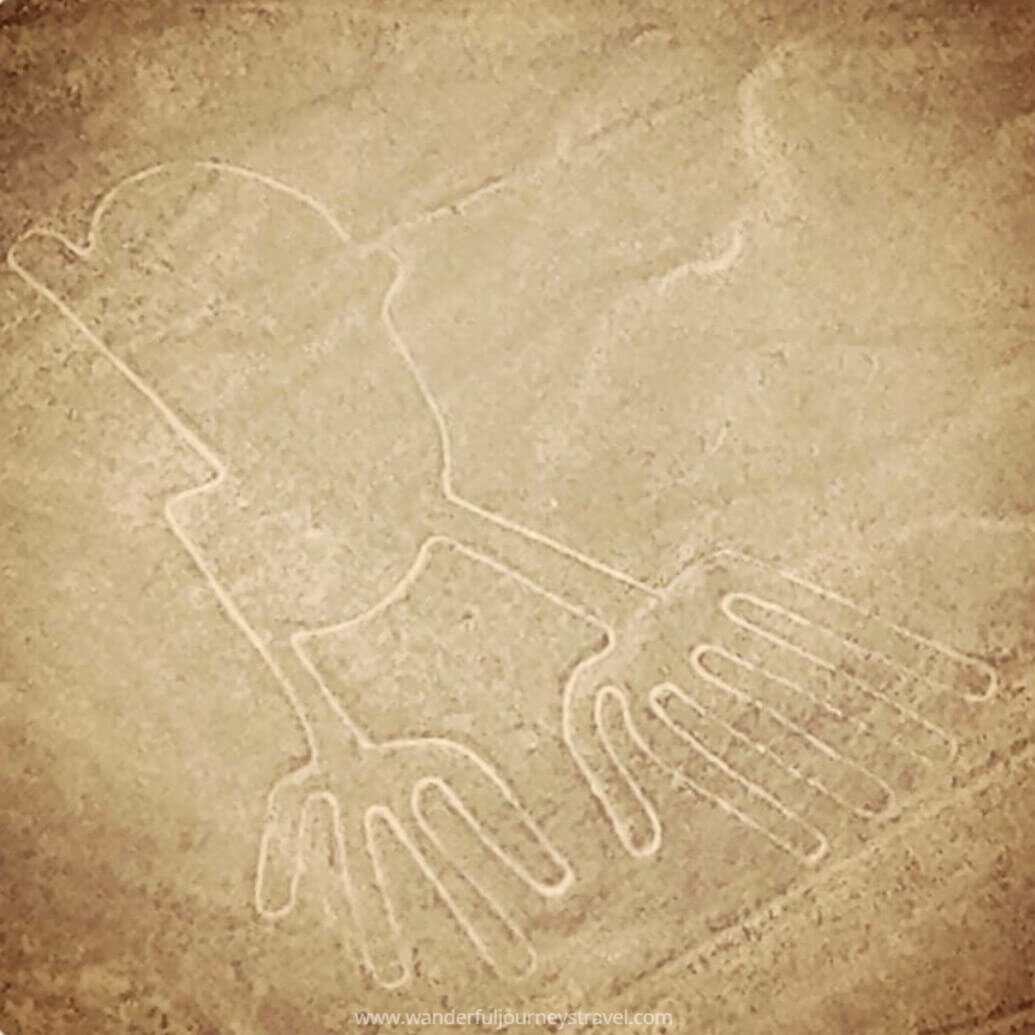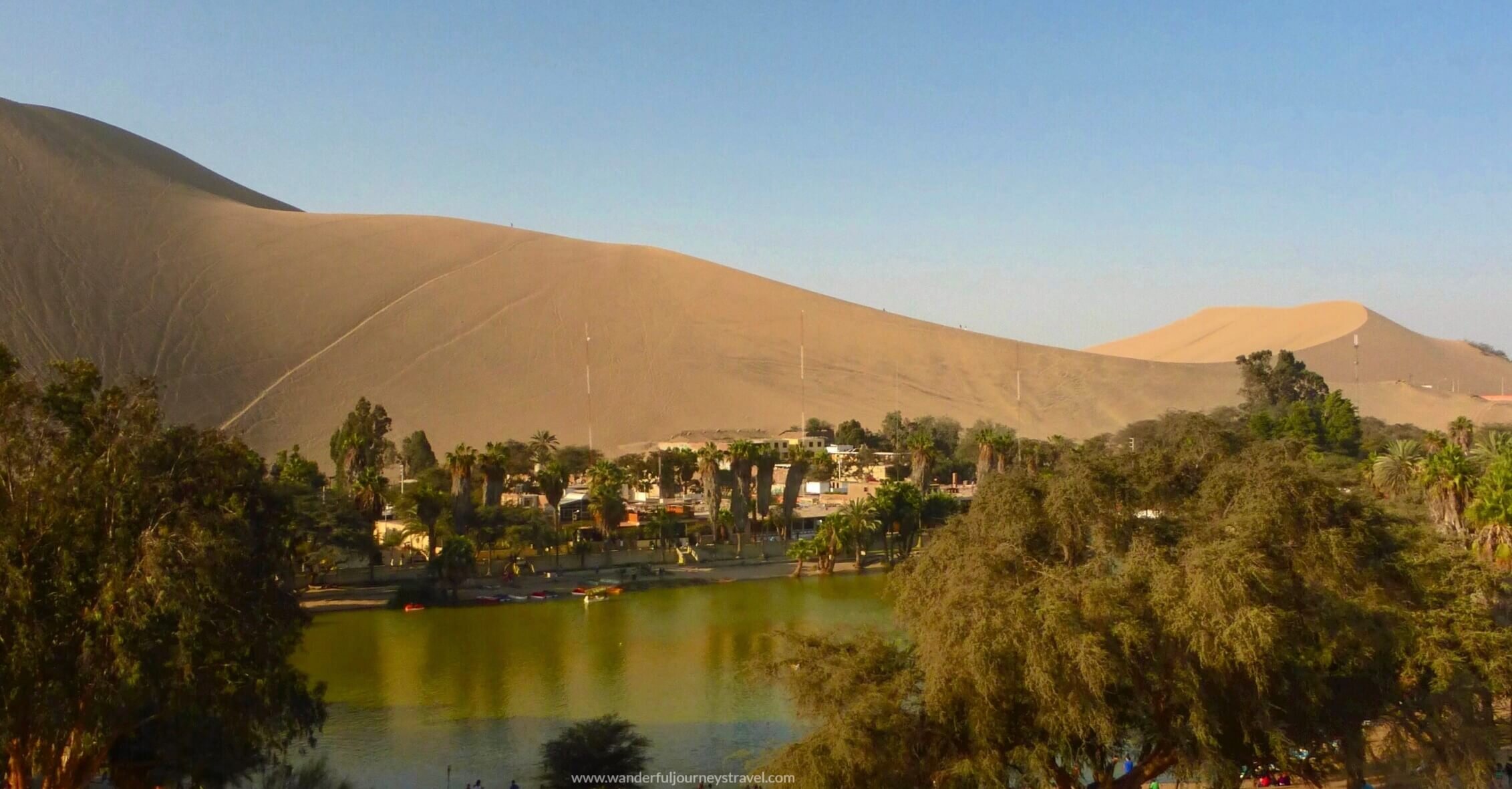Off-the-Beaten-Path Peru: Top Reasons to Add Ica to Your Peruvian Itinerary
Sand dunes and wineries are not two things that are usually associated together, much less traditionally affiliated with Peru - and yet in Ica, Peru these two elements collide, creating a true oasis and ideal destination that should be added to any Peru itinerary.
I will admit, I stumbled upon this Peruvian highlight by chance. After having explored Cusco, hiked the Inca Trail, stood in awe of Machu Picchu, and shown hidden gems throughout Lima, I still had an extra couple of days left in Peru I was looking to fill with adventure. A colleague of mine had recommended Ica, and although I had never heard of it before, a few quick Google searches later and I was sold.
Though not featured on most 'classic' Peru tours, Ica has long been a popular spot on the Peruvian backpacker "Gringo trail" and for Lima weekend getaways. Located 4-5 hours south of Lima, this town is great not only for amazing dunes and wineries surrounding it, but is a perfect base for exploring other highlights Southern Peru has to offer.
Huacachina is the crown jewel of Ica - an idyllic oasis as you could ever imagine. Surrounded by towering golden sand dunes, this tiny laguna mystifyingly appears out of nowhere from the desert desolation to create life in a barren environment. Palm trees spring from the water's edge, a site so picturesque I began to think I was seeing a mirage.
In the 1940s, the oasis was so inexplicable that people believed the water had to have magical healing powers, creating a surge to the area's popularity which led to the development of the small town which resides around the lake today.
My impromptu trip to Huacachina, Ica was so much fun, it remains a top experience from my time in Peru and South America. Even if you only have two days to spare, I could not recommend a visit to this area enough.
Here are my favorites activities from my time in Ica that will hopefully give you as much of a jammed packed amazing journey as I had:
Sand dune adventures
The number one thing to do in Huacachina is to go for an adventure on the sand dunes! There are dozens of companies that will take you out on the dunes, offering various mixes of dune buggies, sandboarding and bodyboarding options.
Taking a tour with with a Dune Buggy is the absolute best (and easiest) way to explore the dunes. The vehicles, which felt more like a roller coaster ride than a drive, took us deep into the dunes and up the highest points for the best views and steepest slopes. Whether you choose to go down surf style, boarding style or just head-first gripping onto the sides for dear life - it will be an absolute epic ride down.
Plus! The dune buggies picked us up at the bottom after our ride, and zipped us to another great spot in seconds, saving us time to get in the most rides possible during our tour, and saving us from the painful climb back up. This seriously spoiled me for sandboarding in various spots elsewhere in my travels - do not underestimate the exertion needed to trek up a sand dune! It is exhausting!
I cannot rave enough how much fun this experience was. Beyond enjoying the sheer beauty of the landscape at all times, my inner-child was simply having the time of its life!
I highly recommend going on a late afternoon / evening tour to witness one of the most beautiful sunsets from the dunes. The tours will take you to the perfect spot to watch the sunset, and give you time to explore some of the surrounding dunes by foot. Absolutely the most perfect way to end such a fabulous adventure.
Pro tip: keep your phones and cameras covered and protected properly - sand can get EVERYWHERE
Details: Multiple group tours are available each day, usually lasting 2 hours and cost around $20. Private tours are also available for larger groups, families, or people who may wish to explore at their own speed/comfort. A 3.7 Soles per person entrance fee/tourist tax is also required on-site to enter sand dune area.
Boat around Islas Ballestas
The fisherman town of Paracas, just over an hour northwest of Ica, serves as the gateway to Paracas National Reserve and Islas Ballestas. The area protects one of the world's rarest ecosystems - an area filled with dramatic coastlines, red sand beaches, barren desert sand dunes, ancient archeological sites, and is home to incredibly diverse flora and fauna species.
The only way to see Islas Ballestas, a group of small rock outcroppings off of the Paracas peninsula, is by boat. Dozens of tour operators line the streets of Paracas offering similar tours twice a day. Since the water can get quite choppy, the tours are only offered in the morning, with the earlier times the better if you tend to get sea-sick.
The islands are known as "the poor man's Galapagos" and although true that the boat rides are pretty cheap, the experience is priceless but obviously different than that of the Galapagos. Getting on the boat, I'll admit I had no idea about what to expect, part of the reason why the experience was able to go above and beyond anything I could have imagined.
Once out of the bay, we were excitedly welcomed by a pod of dolphins - a perfect start!
We then came across an ancient archeological mystery - the Paracas Candelabra Geoglyph. This ginormous figure etched into the hillside dates back to 200 BCE and is so big it can be seen from 12 miles away at sea. Reminiscent of the nearby Nazcar lines (see below), the geoglyph remains a mystery as to why it was made.
I had so much excitement from being able to see one of these enigmatic figures, I barely had time to notice the volume of birds in the sky, multiplying in numbers and darkening the sky.
As we got closer to the islands, turn after turn was filled with even more excitement as we got up close and could make out the sheer volume of birds and animals all piled together, living side by side - a sight absolutely incredible to witness.
There were tons of sea lions laying out and living their best lives on the rocks.
And penguins?! Now that was an incredibly amazing surprise to see!
Plus birds. Lots and lots of birds.
Even if you are not a birdwatching enthusiast, the sight of the islands, coast and sky just completely covered with birds - is a once in a lifetime experience.
But just a fair warning: lots of birds means lots of bird poo! I had not been warned that the probability of being shat on by the masses of birds was quite high (seriously: it's really quite high! the cliffs are white for a reason - not their original color! there is so much guano - or seabird excrement - that it was once a top export of Peru used as fertilizer in Europe!) and was just laughing hysterically as everyone attempted to dodge for cover. So don't wear your favorite hat or outfit!
Boat ride details: Boats leave at 8am or 10-10:30 am, are 2 hours long and cost around $10-15, plus around another $5 for the Reserve entry fee and port tax. There is no other way to visit the islands.
Drink pisco in Pisco
Half hour north of Paracas, the town of Pisco sits. If you have ever been to, or met anyone from Peru, you will know how much they treasure their national drink - the Pisco Sour - who's base liquor derives from Pisco itself (though any Chilean would adamantly deny that claim).
Regardless of which came first, the town or the drink, for hundreds of years this sandy landscape, with little other vegetation around, has been producing an abundance of grapes used to make the strong brandy.
When I found out that Pisco was so close to Paracas, I knew we just HAD to check it out! Recommended to check out Bodegas Vista Alegre, our tour gave us a firsthand look at the process of making pisco. Of course no visit would be complete without trying all the various types of piscos. I will be fair and say - some tasted like straight rubbing alcohol, but others were absolutely delicious!
Nowadays, vine producers use their grapes for more than just pisco, creating delicious wines both around Pisco and Ica. Dozen of vineyards now offer tours, boutique hotels, and restaurants around Ica - the most prominent winery being Tacama - making wine tasting a highlight of any Ica visit, even if you don't make it to Pisco itself.
Fly over the mysterious Nazca Lines
The Nazca Lines are an assortment of 2,000-year-old giant geoglyphs etched into the arid Nazca desert in the shape of animals, plants and designs. The Nazca people are responsible for making over 300 geometric shapes, 70 pictorials and 800 straight lines, with more geoglyphs still being discovered today. The lines are so big (some measure 365m (1,200ft) long!), they can only be seen from the sky - raising many questions as to how the Nazca people were able to construct the lines so perfectly and for what purpose. Though these questions still loom large, the mystery surrounding the desert carvings only makes them that more intriguing to see for yourself.
Luckily, nowadays it is easier than ever to get a chance to see the legendary lines. The unequivocal best way to see the lines is via plane. It used to be that you had to drive all the way to the town of Nazca to be able to fly over the lines, but recently companies have begun to expand, and operators, such as Nazca Flights, offer flight options from Ica and Pisco, in addition to Nazca.
If you want to try to understand the mystery a bit more, a trip to the town of Nazca, which is just over 2 hours from Ica, is worth the day trip. Beyond the flight you can take a closer look at three of the lines from an observation tower, or take a short hike to view a few others. The town also houses two museums where you can learn more the ancient drawers of the lines and possible motivations they had for drawing them.
I sadly didn't have the option to take a Nazca flight from Ica or Pisco, so regrettably didn't have time to visit Nazca as I had a flight to catch back in Lima (I am beyond fascinated with the lines though!). Luckily, my bestie B decide to extend her trip so she would have the chance to visit, so I got to live vicariously through her captures!
All together, the thrills from the sand dunes, the wildlife, the natural beauty, the wine and pisco, and of course historical intrigue, all combine to make a one-of-a-kind excursion in Peru that should not be passed up!
How did I fit all this fun into 2 days?
Day 1: Drive 4.5 hours from Lima, relax at hotel pool or visit winery, 4pm sand dune adventure
Day 2: Drive 1 hour to Paracas, 2 hour boat ride around Islas Ballestas, Pisco vineyard tour, drive 3 hours back to Lima
If you want to see the Nazca Lines, you can fly from Pisco before or after the vineyard tour, or add a 3rd day to explore from Ica and visit more wineries around Ica
Want to visit Ica? Wanderful Journeys prides itself for sending travelers beyond Machu Picchu in Peru and to incredible locations like Ica, Paracas, Pisco and Nazca. Contact us today to plan your adventure to the off-the-beaten-path wonders of Peru!
Have you been to Ica? We want to hear from you! Let us know about your experience in the comments!
PIN IT

































